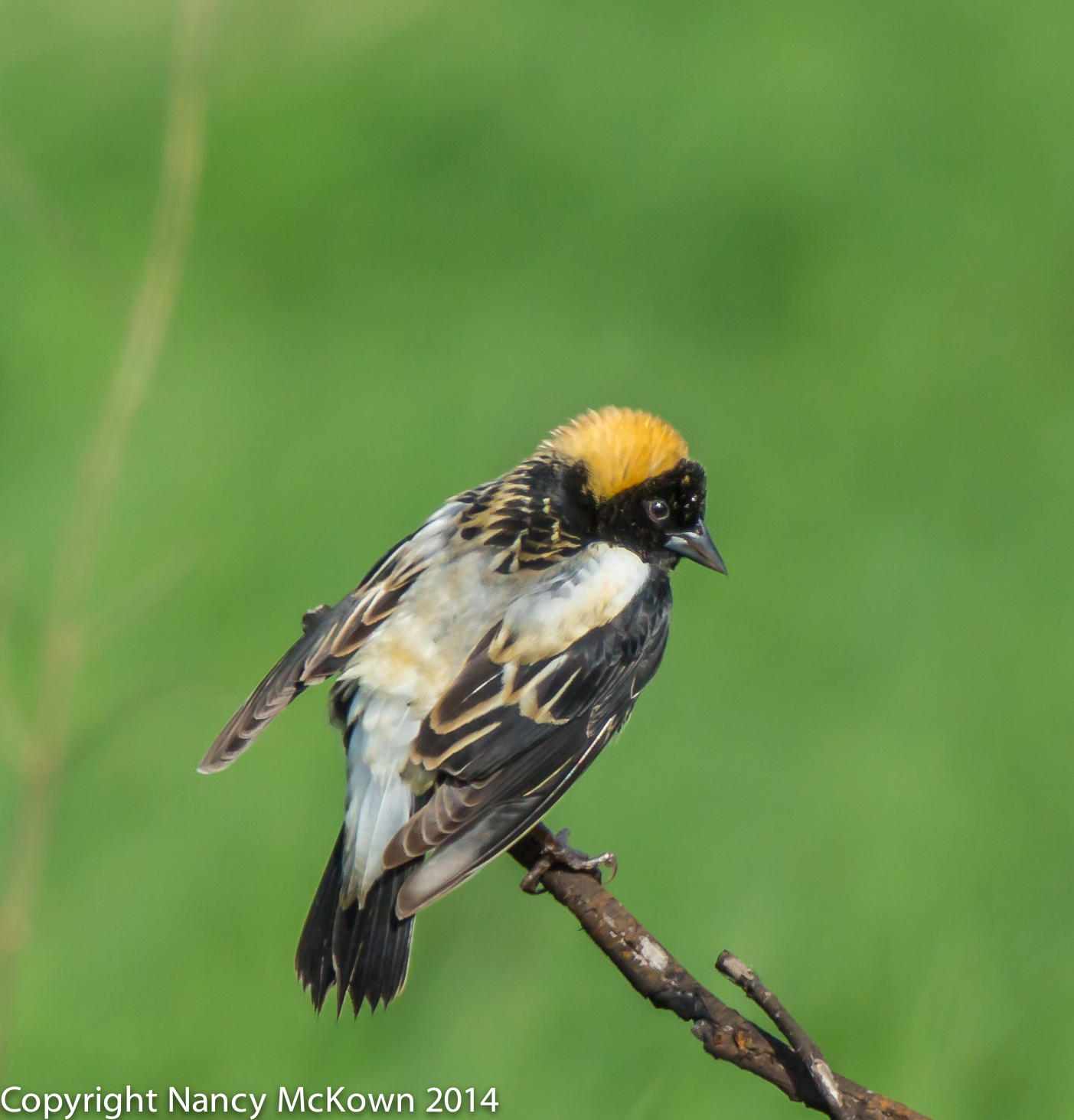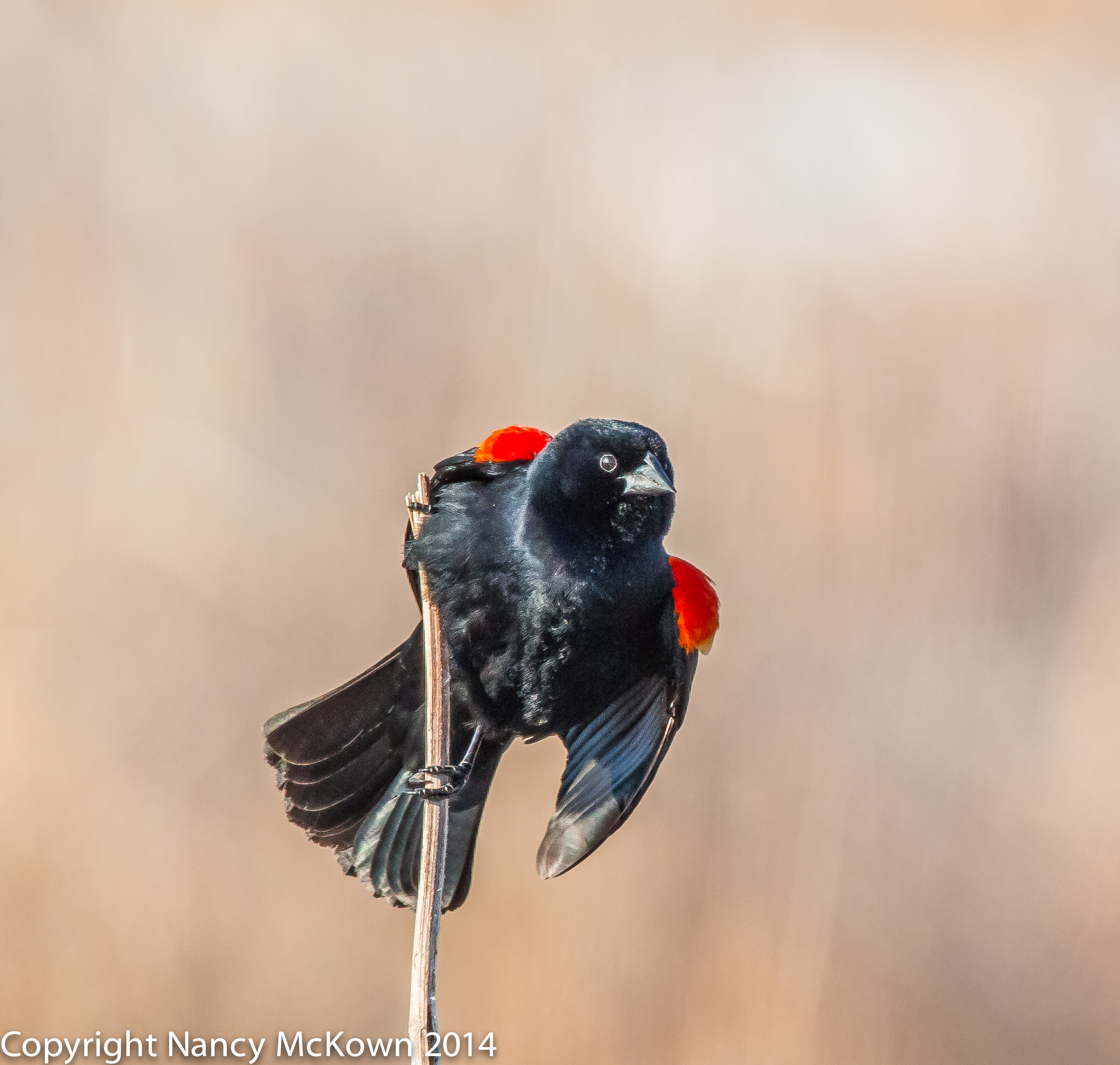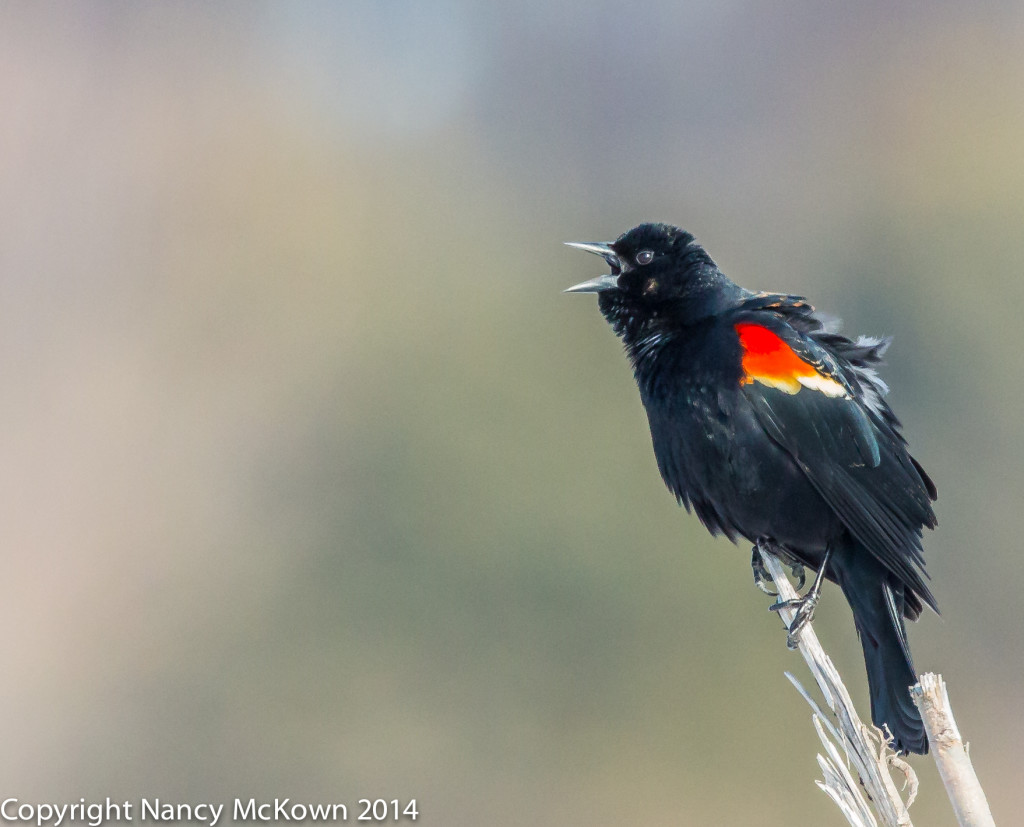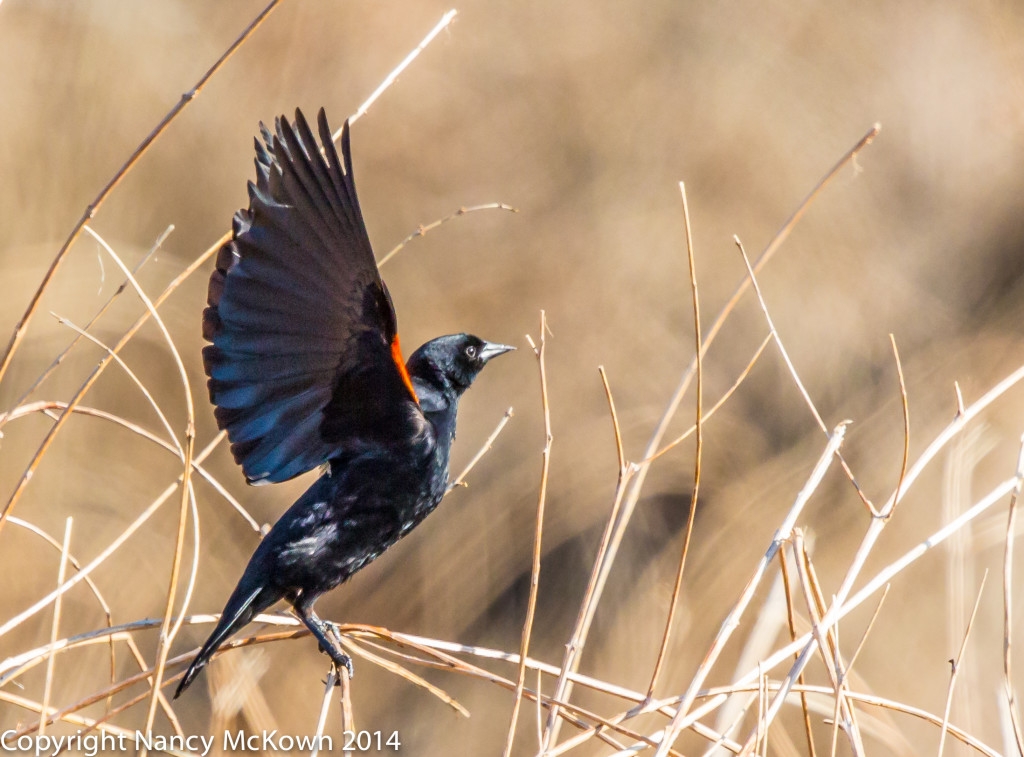Discovering Bobolinks
It seems to me very odd that this is the first Spring that I’ve noticed and photographed bobolinks, even though I’ve been in their territory many times looking for new birds. This year, bobolinks seemed to be posing for me everywhere. I had a wonderful time watching and photographing their rituals and antics and was very pleased with the results.
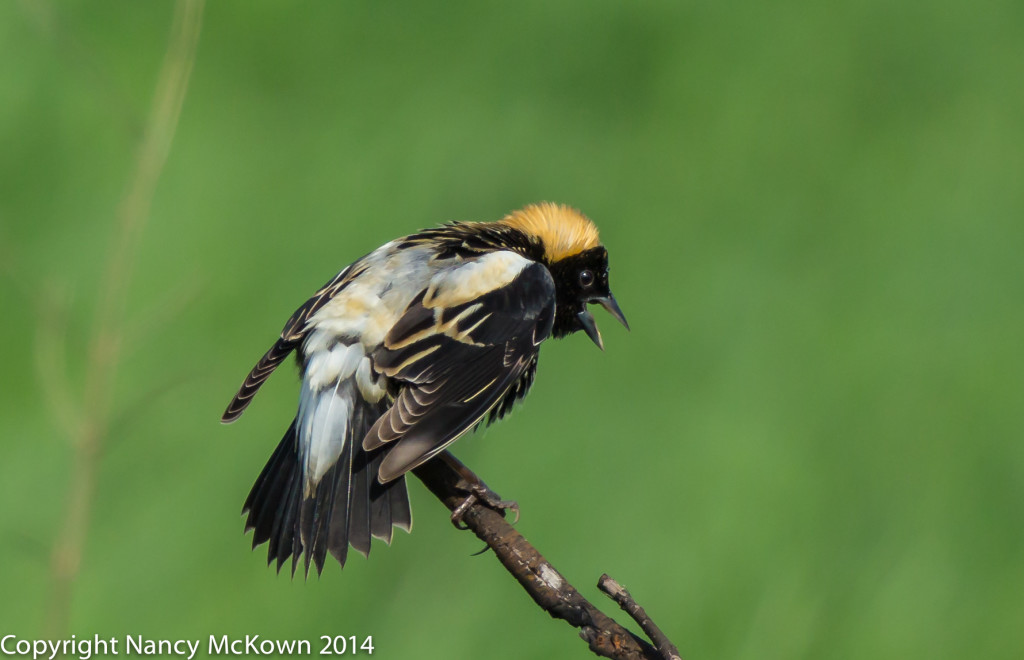
ISO 800; f/8.0; 1/2000 Second
Photographing Bobolinks – Colorful Blackbirds
Bobolinks are beautiful songbirds, related to orioles and blackbirds. They forage for seeds and insects in farm fields and grasses. The male bobolink is particularly striking in the Spring. When he is not singing or furiously chasing other males, he is elaborately bobbing his tail feathers and displaying his white shoulder patches and black and gold plumage. It’s hard to miss that straw colored headdress atop his head.
Like many other songbirds, female and immature bobolinks have very different coloring than the mature males. (See last photo in this post.)
Bobolinks get their name from the lovely songs they sing. For a wonderful, short video of the bobolink singing and displaying, published by “The Music of Nature”, see this link.
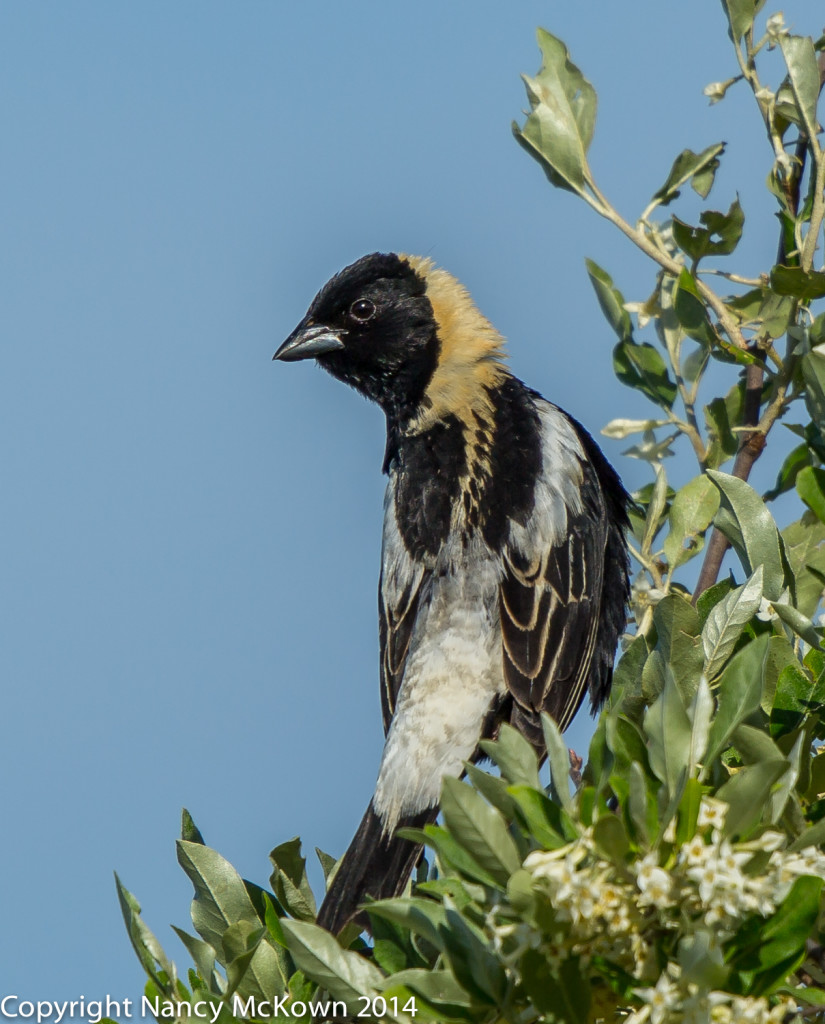
ISO 125; f/9.0; 1/500 Second
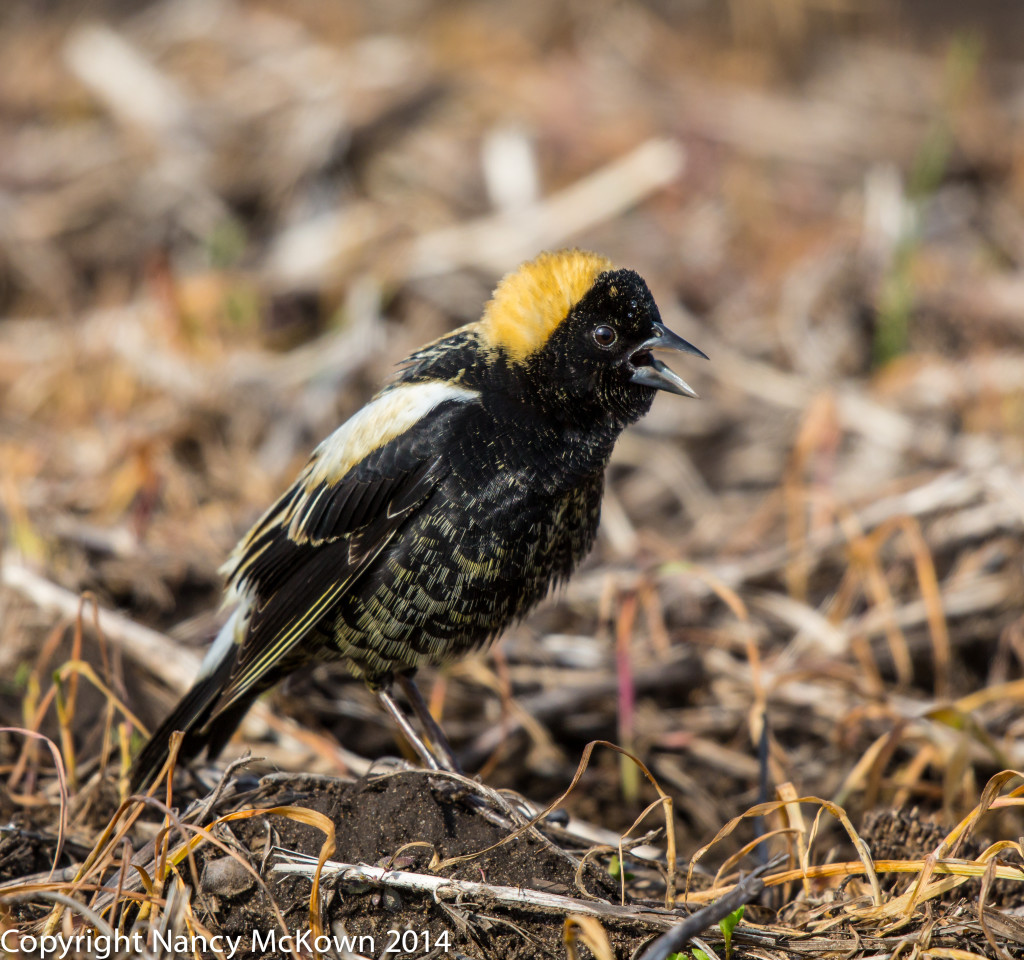
ISO 800 f/8.0; 1/1600 Second

Early August, What Bird.com Says it Might Be a Female or a Juvenile Male Bobolink.
ISO 500; f/9.0; 1/1000 Second
Reflections on Protecting My Bird Photography Passion
In an effort to feed my growing passion for photographing birds, I have spent countless hours trying to improve my skills and way too many dollars to purchase new cameras, lenses, storage drives and computers. I also maintain this bird photography blog as an incentive to keep working, learning and sharing. Why do I do it? Because these bobolink photos (and many, many other bird photographs) make up my digital portfolio and represent the joy I find in wild bird photography.
Protecting Your Investment in Photography
Maintaining specialized insurance and backing up your photo files are not trivial pursuits. Backup and recovery/replacement systems (in the cloud and at home) are uncommonly simple, but immensely important precautions, costing very little money, but affording photographers basic peace of mind.
The Inevitability of the Unexpected
Taking a few basic precautions to safeguard your digital portfolio and photo equipment are fundamental practices for photographers. Hard drives and memory disks that hold your favorite photos and wild life experiences will fail; it’s just a matter of when. Ridiculously expensive lenses and cameras can be stolen, lost, or damaged, shattering your investment.
Not having insurance plans in place that allow you to promptly return to that happy place where you left off before the devastation is just plain silly.
